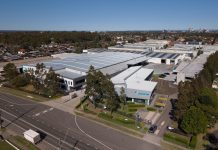
Image credit: www.ecodev.vic.gov.au/defence
The Victorian State Government has launched a new advertising campaign showcasing the state’s defence industry capabilities.

Image credit: www.ecodev.vic.gov.au/defence
The new campaign, dubbed “Defence Excellence – Mission Possible”, aims to help secure future Commonwealth defence projects, including the LAND 400 Phase 2 that will see the development of 225 Combat Reconnaissance Vehicles to replace the current Australian Light Armoured Vehicle fleet.
Minister for Industry and Employment Wade Noonan said the campaign would “boost the visibility” of Victoria’s defence industry and help secure major defence contracts, attract investment and create jobs.
“Victoria’s defence industry has a global reputation for excellence, and is well able to take on new programs such as the LAND 400 contract,” Mr Noonan said.
“We are getting on with the job of growing this important industry, and this new campaign will help local supply chain companies win more contracts and put more Victorians into work.”
Victorian Defence Industry Advocate Greg Combet said the six month campaign, which began yesterday, features industry publications and defence supplements in major newspapers as well as on billboards at Canberra Airport.
“Australia’s defence sector relies heavily on Victorian-based industry, science and research,” the Minister continued.
“This campaign will help build on those important capabilities and attract future investment and jobs.”
Victoria has a proven track record with military land vehicles through its expertise in engineering, design and technology, as well as strong R&D sectors and a world-class tertiary system.
Its defence industry injects up to $8 billion to the State’s economy and includes more than 300 businesses, employing more than 7,000 people.



















